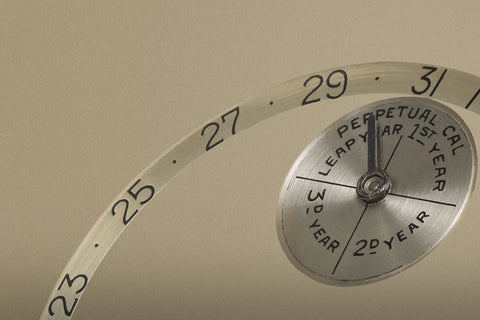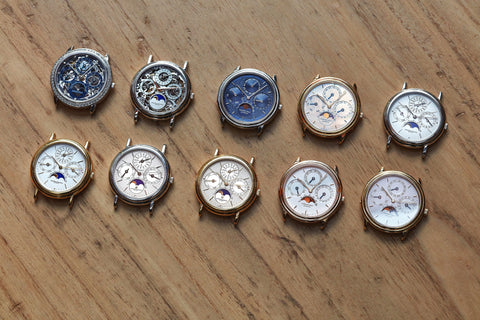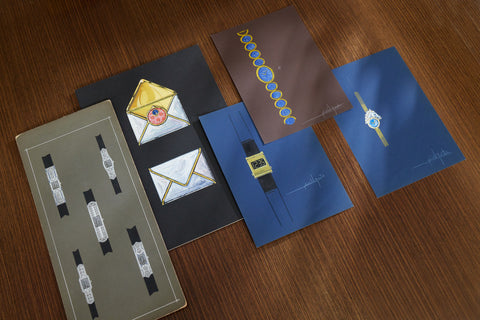First launched in 1978, the Quantième Perpetuel* by Audemars Piguet was the world’s thinnest automatic perpetual calendar. One of only 362 examples in rose gold, this reference 25657 captures much of the appeal of the earliest pieces, with its classic "Audemars Piguet" signature, crisp white dial, and moonphase.
You May Also Like
ORIGINS OF THE QUANTIÈME PERPÉTUEL
In the late 1970s, complicated wristwatches were exceedingly rare.
The Quartz Crisis had decimated the watchmaking industry, with the number of watchmakers in Switzerland having dropped from 1,600 to 600. Against all odds, three watchmakers at Audemars Piguet decided to develop the world’s thinnest automatic perpetual calendar movement. The project was carried out in secret, with the manufacture’s upper management completely unaware of what was going on. The watchmakers worked in their free time, often meeting at night to discuss their work.
In 1977, they surprised Georges Golay, the CEO of Audemars Piguet at the time, with the finished calibre. A risk taker who’d already released the Royal Oak a few years prior, Golay was confident that the manufacture could successfully commercialise the automatic perpetual calendar. When it was launched in 1978, the Quantième Perpetuel was the world’s thinnest automatic perpetual calendar. To put things in perspective, in 1984, only 1,066 perpetual calendars were produced in Switzerland. Of those, Audemars Piguet made 675.
Though the Royal Oak often gets credit for helping Audemars Piguet survive in the wake of the Quartz Crisis, evidence suggests the Quantième Perpetuel played a much greater role. According to the manufacture, 7,219 perpetual calendars were made over a fifteen-year period, including some which were integrated into the Royal Oak case. A canvas to experiment with different designs, 70 different models were produced, with around 200 variations documented. The reference 25657 was produced between 1982 and 1993. During that period, 1,821 pieces were produced, with only 362 of those being in rose gold.


















































































































































































































